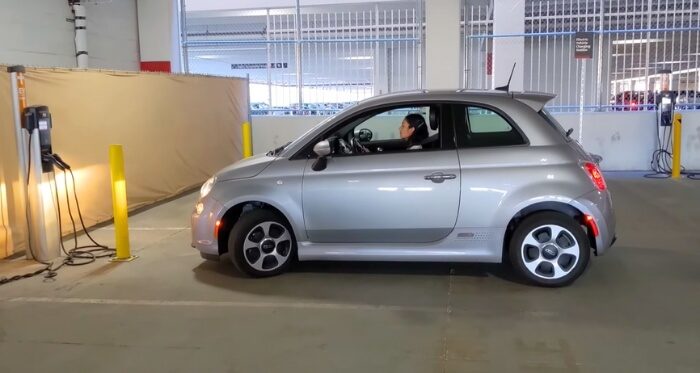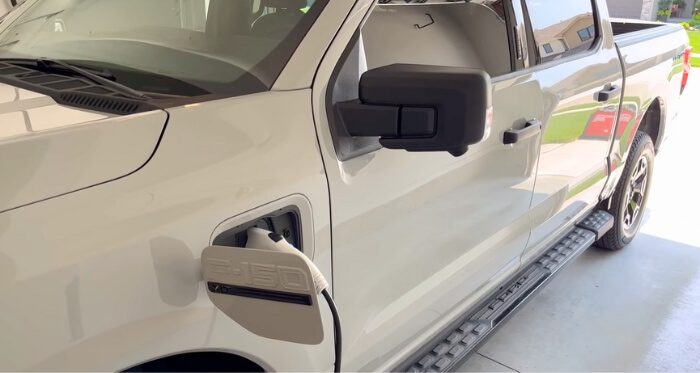Electric Vehicles are becoming a trend in this modern world. Due to the adoption of sustainable power and eco-friendly systems in the transportation sectors. As a result, charging the EV becomes a requirement for the owners. And the question “Can You Charge an EV With a Generator?” pops up into the minds of the EV owners.
Yes, you can. However, using a generator to charge an EV comes with limitations. Most generators aren’t equipped to provide the high-voltage charging that EVs typically require. In emergency scenarios, a portable generator can be used to slowly charge an EV via a standard wall outlet and a compatible adapter.
However, this method is neither efficient nor practical for long-term use. For consistent and efficient charging, dedicated EV charging stations or home charging setups are recommended.
To resolve the situation CrackPlatoon introduced EV charging stations in Bangladesh so that you don’t fall behind just because of the lack of enough charging stations nearby. Stay with us as we dive deeper into this topic and explore the nuances of charging EVs with generators.
The Growing Popularity of Electric Vehicles
These vehicles are making a significant shift in the automotive industry, driven by advancements in technology and growing environmental awareness. This change is redefining how we think about transportation, emphasizing sustainability and innovation. Let’s dive into various aspects of this transformation.

Environmental Impact
They represent a cleaner alternative to traditional cars, significantly reducing carbon emissions that contribute to climate change. Unlike gasoline-powered cars, EVs emit no tailpipe pollutants, making them a key player in efforts to improve air quality. This shift is crucial in urban areas, where air pollution often exceeds safe levels.
Economic Factors
The cost-effectiveness of electric vehicles is becoming more apparent. Initially, higher purchase prices are offset by lower running and maintenance costs. Additionally, governments are offering incentives for EV purchases, making them financially attractive to a broader range of consumers.
Technological Advancements
Rapid advancements in battery technology are improving EV performance and range. Modern EVs can travel much farther on a single charge than earlier models, addressing one of the primary concerns of potential buyers. This progress is essential for EVs to become a viable option for more drivers.
Infrastructure Development
The expansion of EV charging stations in Bangladesh is critical to the adoption of electric vehicles. A growing network of public and private charging facilities is making EVs more practical for everyday use and long-distance travel. This infrastructure is key to supporting the growing number of EVs on the road.
Consumer Attitudes
There’s a growing consumer interest in sustainable and innovative transportation options. Many are drawn to EVs not just for environmental reasons, but also for the cutting-edge technology they embody. This change in mindset is accelerating the adoption of electric vehicles worldwide.
Types of EV Charging Systems
Electric Vehicle (EV) charging has evolved, offering various options to cater to different needs and scenarios. These charging types differ in power output, charging speed, and infrastructure requirements. Knowledge of these variations will help users to choose the most suitable charging method for their EVs.

Level 1 Charging
The most basic form of charging the EV is level 1 charging. They can be found as a standard 120-volt household outlet. It’s convenient as it doesn’t require special installation, but it’s the slowest, often taking overnight to charge. This method is ideal for plug-in hybrids or as an overnight charging solution for EVs.
Level 2 Charging
Then comes a significantly faster charging system, level 2 charging, utilizing a 240-volt outlet. It’s common in homes, public parking areas, and workplaces, offering a good balance between speed and accessibility. Installation requires professional services, but the result is a much quicker charging time, making it popular among EV owners.
DC Fast Charging
An ideal solution for long-distance travel is the Level 3 charging system. Also known for DC Fast Charging. It uses direct current (DC) to charge an EV battery much faster than Level 1 or 2. However, it requires more complex infrastructure and is typically found in commercial charging stations along highways.
Wireless Charging
The cable-free solution for EV charging is the wireless charging system. Which uses an inductive charging pad. An EV parks over a pad and then transfers power wirelessly to the vehicle. This emerging technology offers convenience but is currently less efficient and more expensive than conventional methods.
Solar Charging
The eco-friendly charging options come with solar chargers that harness renewable energy. It involves solar panels converting sunlight into electricity to charge an EV. This method is sustainable but depends on weather conditions and requires significant initial investment.
Each charging type offers unique benefits, catering to different user needs and preferences. CrackPlatoon EV charging also offers a wide range of EV chargers. From convenient home charging to rapid charging stations, the variety ensures that EV charging is accessible and efficient for all users.
Can You Charge an EV With a Generator?
Yes, it is possible to charge an electric vehicle (EV) with a generator, but it’s essential to understand the intricacies and considerations involved in this process. Generators can serve as a backup charging solution in situations where traditional charging stations are unavailable, making them a valuable resource for EV owners.

To know more elaborately about whether can you charge an EV with a generator, you should ponder certain aspects of this process. They will provide you with a clearer and better understanding of this process. Here are the aspects briefly explained.
Generator Capacity Matters
To effectively charge an EV, your generator must provide sufficient voltage and amperage. Ensure that your generator’s output aligns with your EV’s charging requirements, as different models have varying power needs.
Charging Speed and Time
It’s important to recognize that generator-based charging tends to be slower compared to dedicated EV charging stations in Bangladesh. Be prepared for longer charging durations, especially for a high-capacity EV battery to refill.
Emergency Charging Considerations
They can be a lifesaver during emergencies, providing a means to recharge the EV when other options are limited. It’s wise to have a backup plan and the necessary equipment, such as adapter cables, for such situations.
EV Compatibility
Different EVs have different charging capabilities. Some can be charged using a generator, while others cannot. Learning your EV’s specifications, such as its charging voltage, amperage, and frequency requirements, is essential. Read the vehicle’s manual or contact the manufacturer for precise information.
So, it is important to learn the capabilities and limitations of generator-based charging for EV owners, especially when faced with off-grid or emergency charging needs.
How Does EV Charging with a Generator Work?
It is a unique solution to charge the Electric vehicle (EV) with a generator, especially in areas where traditional charging infrastructure is lacking or during power outages. This method involves using a portable generator to supply electricity to an EV’s charging system. Here’s a step-by-step guide to learn the process.

Step 1: Select the Right Generator
Choose a generator that can provide the necessary power output for your EV. It’s crucial to select one that matches or exceeds the power requirements of the EV’s charger to ensure efficient and safe charging.
Step 2: Set Up the Generator
Position the generator in a well-ventilated area to avoid the accumulation of harmful exhaust fumes. Ensure the stability of the generator and set it up on a flat surface to prevent any operational hazards.
Step 3: Connecting the Charger
Plug the EV charger into the generator using an appropriate adaptor if necessary. Make sure the connection is secure to avoid any electrical hazards or interruptions during the charging process.
Step 4: Starting the Charging Process
Turn on the generator and check that it’s running smoothly. Then, connect the EV to the charger as it would at a regular charging station. Monitor the charging process for any irregularities.
Step 5: Monitoring the Charging Process
Regularly check both the generator and the EV during charging. Ensure the generator is functioning correctly and the EV is charging as expected. Avoid leaving the setup unattended for extended periods.
Step 6: Completing the Charge
Once the EV reaches to desired charge level, first disconnect the EV from the charger. Then, turn off the generator and safely unplug the charger. Allow the generator to cool down before storing it.
Step 7: Maintaining Safety Precautions
Always prioritize safety when using a generator for EV charging. Follow the manufacturer’s guidelines for both the generator and the EV. Regular maintenance of the generator is crucial to ensure its reliability and safety.
Types of Generators and Their Suitability for EV Charging
As EVs are becoming more prevalent, knowing their compatibility with different generators is essential. The generators come in different sizes, power outputs, and fuel types, impacting their suitability for EV charging with them. This discussion explores various generator types and their appropriateness for this specific use.

Portable Generators
A compact and ideal solution for occasional EV charging, especially in remote areas is the Portable Generator. These generators typically run on gasoline, diesel, or petrol offering a convenient power source. However, their power output is limited, making them suitable for slower, emergency charging.
Inverter Generators
For cleaner and more stable power, Inverter Generators can be used to charge an EV. That can be beneficial for sensitive electronics like EV batteries. They are quieter and more fuel-efficient than traditional portable generators. This type is ideal for EV charging during travel or in areas with frequent power outages.
Standby Generators
They are permanently installed and can be automatically activated during power interruptions. Which offers a higher power output, making it suitable for regular EV charging at home. Their dependability and capacity make them a reliable backup for EV charging needs.
What to Expect while Charging with a Generator?
It is a practical solution to charge an electric vehicle (EV) with a generator in certain scenarios, but it’s different from using standard EV charging stations. What to expect during this process is crucial to understand for efficient and safe charging. This guide outlines key aspects to consider when using a generator for EV charging.

Generator Capacity and Charging Speed
The generator’s power output dictates the charging speed for your EV. A high-capacity generator will charge faster, but it’s more expensive and consumes more fuel. Consult with your EV charger supplier to determine the optimal generator size for your vehicle.
Noise and Emissions
The gasoline and diesel generators produce more noise and emissions during operation. So, while using them be prepared for a louder environment compared to silent EV charging stations. Always operate the generator in a well-ventilated area to avoid harmful exhaust fumes.
Fuel Efficiency and Cost
The efficiency of the generator impacts the overall cost of charging your EV. Fuel-efficient models like inverter generators may cost more upfront but save money in the long run. Consider the trade-off between initial investment and ongoing fuel costs.
Power Stability and Safety
They must provide stable power to prevent damage to your EV’s battery. Inverter generators offer cleaner power output, suitable for sensitive electronics. Always follow safety guidelines provided by the generator and EV charger supplier to ensure a secure charging process.
Portability and Setup
Portable generators offer the advantage of mobility, allowing EV charging in remote locations. However, setting them up requires physical effort and an understanding of electrical connections. Ensure that the generator is on stable ground and securely connected to the EV charger.
Tips for Safe EV Charging with a Generator
Charging an electric vehicle (EV) with a generator can be a viable alternative in certain situations, but it requires careful attention to safety. Here are some essential tips for safely charging your EV with a generator.
- Select the Appropriate Generator: Choose a power output that matches your EV’s charging requirements. Inadequate power can lead to inefficient charging or damage to the battery.
- Read the Manuals: Thoroughly read both the generator and EV charger manuals before starting. Understanding your equipment’s specific requirements and limitations is crucial for safe operation.
- Ensure Ventilation: Operate the generator in a well-ventilated area to avoid the buildup of toxic exhaust fumes. Indoor use can lead to dangerous levels of carbon monoxide.
- Stable Placement: Set up the generator on a flat, stable surface to prevent it from tipping over. This reduces the risk of fuel spills and electrical hazards.
- Regular Maintenance: Keep the generator well-maintained according to the manufacturer’s instructions. Proper maintenance ensures the generator operates safely and efficiently.
- Use the Right Fuel: Always use the fuel type recommended by the generator manufacturer. Using the wrong fuel can damage the generator and create safety hazards.
- Monitor During Charging: Regularly check the generator and EV during charging for any unusual signs. Immediate intervention is required if any irregularities are noticed.
- Avoid Overloading: Do not exceed the generator’s maximum capacity as it can lead to overheating or failure. Check the power requirements of your EV charger to ensure compatibility.
- Use Quality Extension Cords: If extension cords are necessary, use heavy-duty ones that can handle the power load. Poor-quality cords can overheat, increasing the risk of fire.
- Keep a Fire Extinguisher Handy: Have a fire extinguisher accessible in case of emergencies. It’s a vital safety measure when dealing with electrical and fuel-powered equipment.
By following these tips, you can charge your EV with a generator safely and effectively, ensuring both the well-being of your vehicle and your safety.
Final Verdict
Our exploration into the query “Can you charge an EV with a generator?” reveals a nuanced answer. While it’s feasible to use a generator in emergencies, it’s imperative to acknowledge the limitations and adhere to proper guidelines. The accuracy in matching generator specifications to the EV’s charging needs is as crucial as filling out an important application correctly.
Errors in this process, much like inaccuracies in documentation, can lead to inefficient charging or potential damage to the vehicle’s battery. Rectifying such mistakes requires understanding the specific steps and equipment needed, emphasizing the importance of precision.
This discussion underscores the significance of using dedicated CrackPlatoon CSL-launched EV charging solutions over generators for regular use, highlighting the potential consequences of opting for less suitable alternatives.
